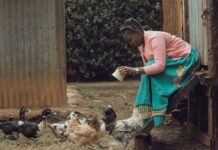
Two new outbreaks of highly pathogenic avian influenza (H5N1) have been confirmed this week in Denmark and the Netherlands, affecting more than 220,000 birds combined and signaling renewed challenges for northern Europe’s poultry sector as the winter migration season approaches.
In Denmark, authorities announced on Wednesday that 150,000 chickens will be culled following the detection of H5N1 in a flock located in the southeastern region of the Jutland peninsula, according to the Danish Veterinary and Food Administration, cited by Reuters.
This is Denmark’s first outbreak in a commercial poultry flock since April 2025, when the country lifted the restrictions on poultry farming that had been imposed in December 2024.
The agency added that, starting in December 2025, all poultry and captive birds in Denmark must once again be kept indoors or under cover to minimize infection risk.
Meanwhile, in the Netherlands, the government confirmed on Tuesday that 71,000 chickens will be culled at a farm in the northern part of the country after bird flu was detected (Reuters, Oct. 7, 2025).
This represents the first Dutch outbreak since March of this year. The authorities have not yet introduced a national housing order, stating that the current situation does not warrant such a measure. However, the government’s Expert Group on Animal Diseases will meet in the coming days to reassess the risk level.
The detections come as many European countries step up biosecurity and surveillance measures ahead of the winter migratory season, when contact between wild birds and domestic flocks increases the risk of virus transmission.
Both governments have stressed that avian influenza poses no risk to food safety, and that poultry products from unaffected farms remain safe for consumption.
Sources: Reuters (Oct. 7–8, 2025)
















